By Marcia Myers
Blog Editor, Wild Ones – St. Louis Chapter
In part one of this two-part blog on Dawn Weber’s yard, we learned about the basic components of her yard and how she got started with native plants. In this part, we’ll discover more specifics about the yard, including a list of native plants and bird sightings.
Although almost all of the plants in the front yard were planted by more than 30 Wild Ones – St. Louis Chapter volunteers, Dawn has added additional plants and designed new features. For example, two days before the gathering on May 4, Pete Klarmann finished installing the steps in the front yard. These steps create balance between garden areas, add interest, and work well with the hill’s slope.
The backyard
To help her get started, Dawn worked with Forrest Keeling on what she wanted to plant in the backyard as well as a little bit of the landscaping layout. Then, in the fall of 2013, the main trees and shrubs were planted. In the spring of 2014, she started to plant flowers and subsequently has planted flowers every spring and fall. The sun-loving plant area on the left was completed in the fall of 2014.
What are some of Dawn’s favorite plants? She really likes purple rocket (Iodanthus pinnatifidus) because it starts to flower after the main big spring woodland wildflower “season”. Because of it’s unique foliage, she likes the lyreleaf sage (Salvia lyrata), which is native to Missouri, but sourced from Kentucky. Also, she likes beautyberry (Callicarpa americana) because of the amount of bird life it attracts in the fall. Her favorite plants are blue or purple.
Dawn said, “I will buy everything I can local eco type, sourced from Missouri generally.” However, if no garden centers or growers in Missouri are sourcing, she will find the plant elsewhere.
The native plants in Dawn’s yard aren’t just for human enjoyment. She has seen 20 species of butterflies including the American lady that she watched lay eggs on the pussytoes (Antennaria neglecta) last year. Squirrels, possums, raccoons, snakes, and rabbits all visit her yard. The adult rabbits don’t seem to sample the plants but the young ones will bite off everything they can find, seemingly at random.
To deter wildlife from eating her plants, Dawn sprays lightly around the base with a rabbit deterrent and says it just smells bad. Because she doesn’t know what effect that would have on insects, she only sprays the bottom of the plant. Last year when she became more interested in close-up photography, she started looking at insects and is learning through self-guided identification.
Dawn has seen 80 species of birds including 10 or 12 baby cardinals in her yard at one time. She has seen fox, song, and lark sparrows and Nashville, Wilson’s, and magnolia warblers (complete list at the end of this blog). While I was visiting, a baby downy woodpecker was flitting about and Dawn said it “hangs around”. She has seen five kinds of woodpeckers.
Most of the backyard is shady in the afternoon and is therefore cooler in the summer – a pleasant place to relax with a canopy of tall trees, courtesy of the neighbors’ yards. Dawn said she allows the native-plant areas to get a bit more wild as the summer progresses. The biggest job is in the spring when she orders 6-8 cubic yards of leaf mulch from St. Louis Composting and spreads that on her garden beds. After that, for the most part, she spends her garden time weeding which takes about an hour per week. Of course, planting the 65 new plants that she recently purchased at the plant sale will take a bit longer.
General tips:
- Separate the plants from the lawn by using some type of border.
- Make sure you collect or clip off seed heads from mega-seed-producing plants such as Penstemon digitalis.
- Some bees need bare ground to nest so she doesn’t completely cover the yard with leaf mulch in the backyard.
Dawn’s future plans include a pondless bubbler, which is a dug pond filled with rocks. Also, she will continue to remove the honeysuckle. I noted that her neighbors have quite a bit of bush honeysuckle (Diervilla lonicera), although Dawn states that one neighbor has joined in the removal effort.
How you can get started:
Get a Bring Conservation Home survey. At the very least, you can get ideas and start thinking about the recommendations.
What the neighbors think:
The person who lives across the street loves Dawn’s yard and says he has the best view. Most people who pass by and see the yard say, “Looks nice,” and keep walking. “Now that I’ve been doing it, I’m interested in all of it,” Dawn said.
You have more opportunities to view yards this summer and early fall. The July gathering at Tessa Wasserman’s yard is on July 6 and July 9. Also, get ideas during the June Native Plant Garden Tour on June 18, but note that the final day to purchase tickets is Monday, June 6.
Dawn’s resources:
- Margy Terpstra’s directions for a pond
- 201605-Weber-plant-list (PDF file sorted by scientific name)
- 201605-Weber-plant-list1 (PDF file sorted by common name)
- 201605-Weber-yard-bird-list (PDF file)
- Recycled lawn items:
Locally, check out Gringo Jones Imports and The Bug Store by MOBOT - Etsy shops with recycled lawn ornaments
IRONnEARTH
IndustrialBloom
LuckyKarmaCreations
nbillmeyer

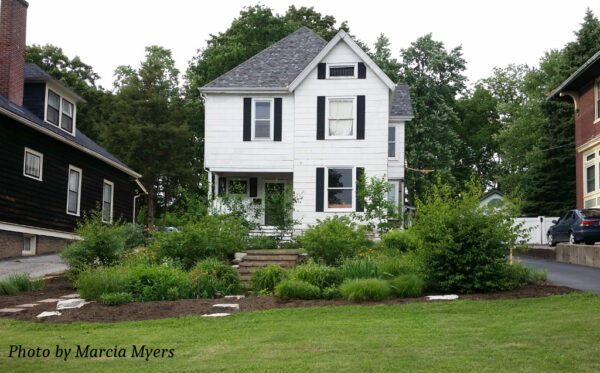
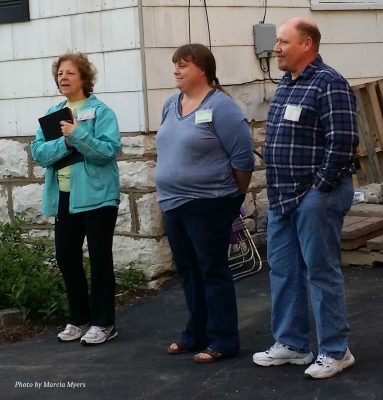
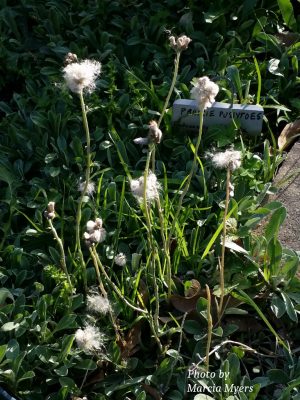
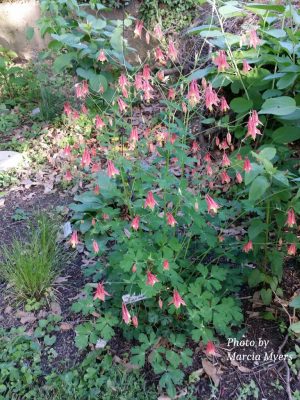
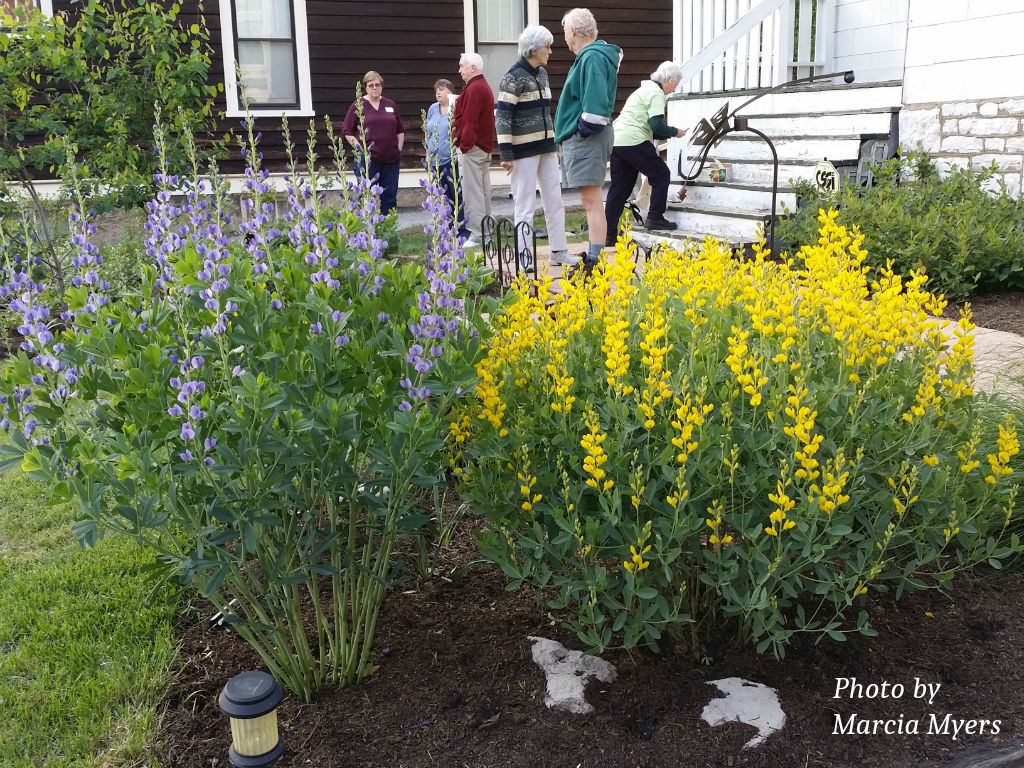
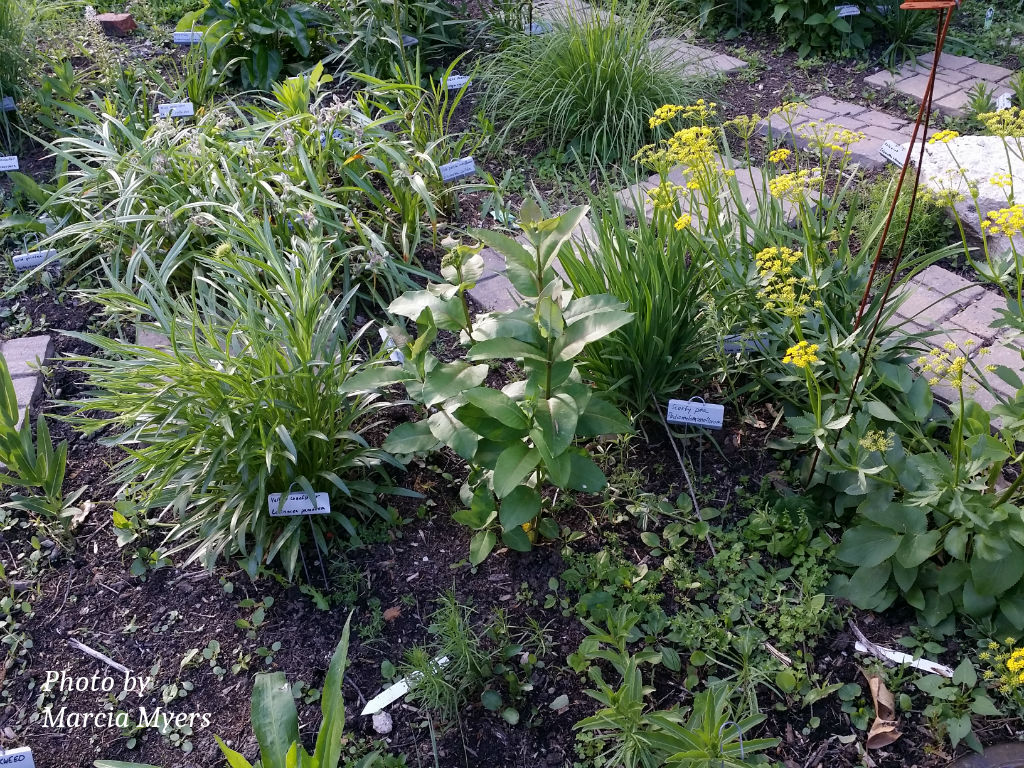
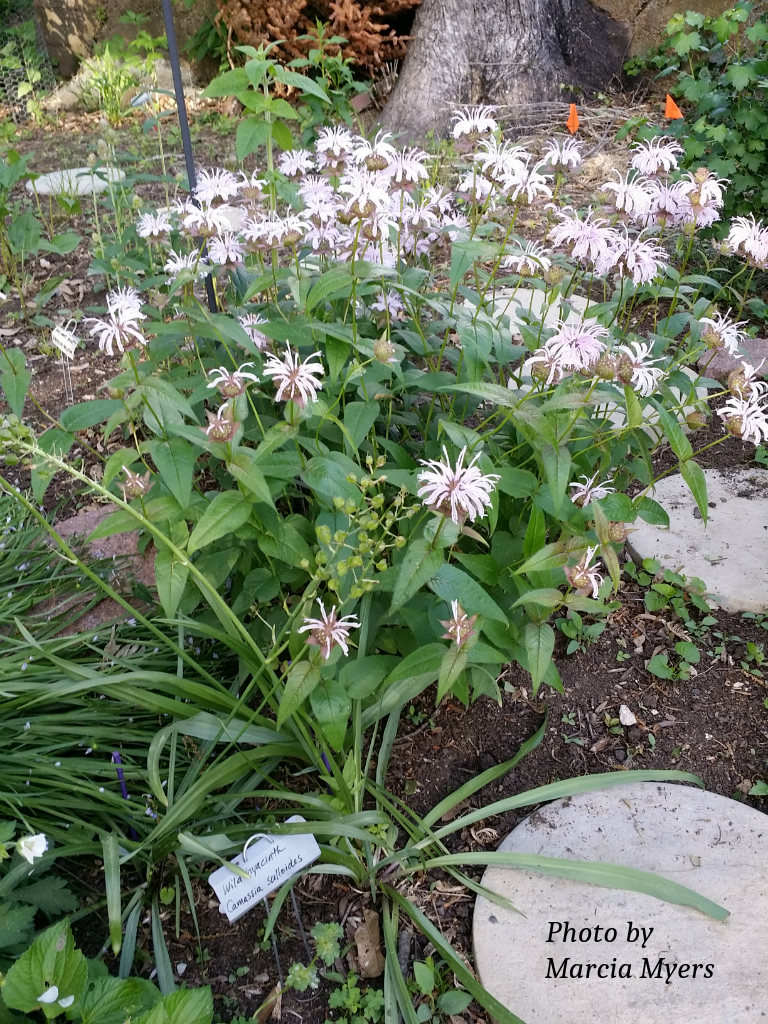
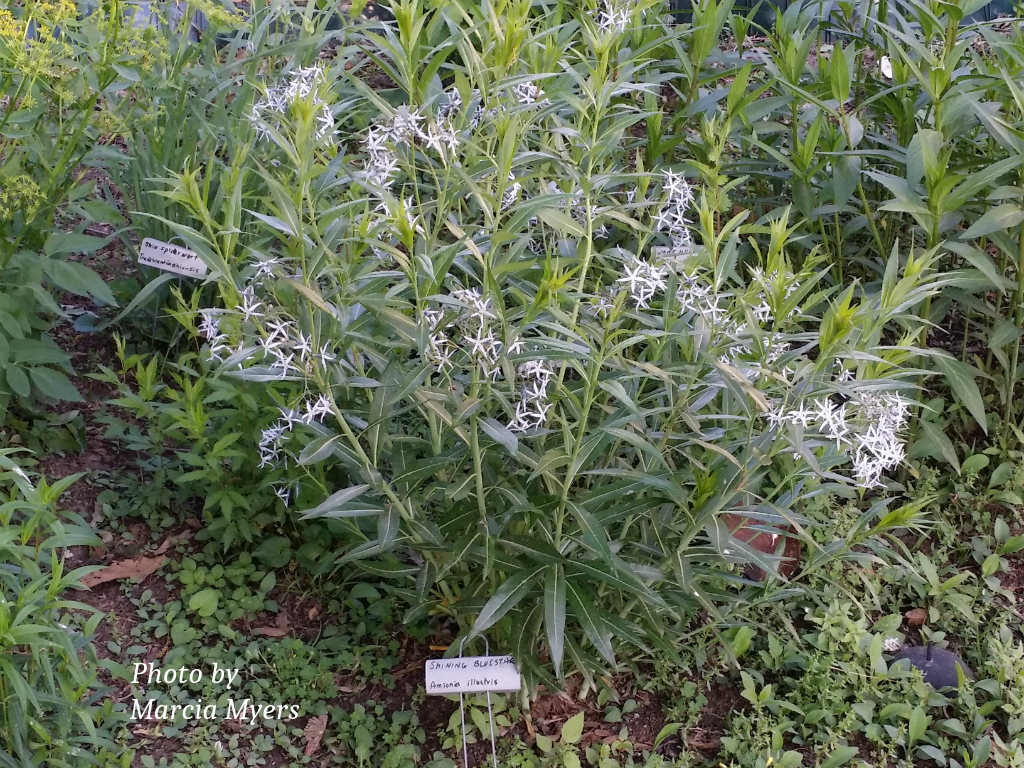
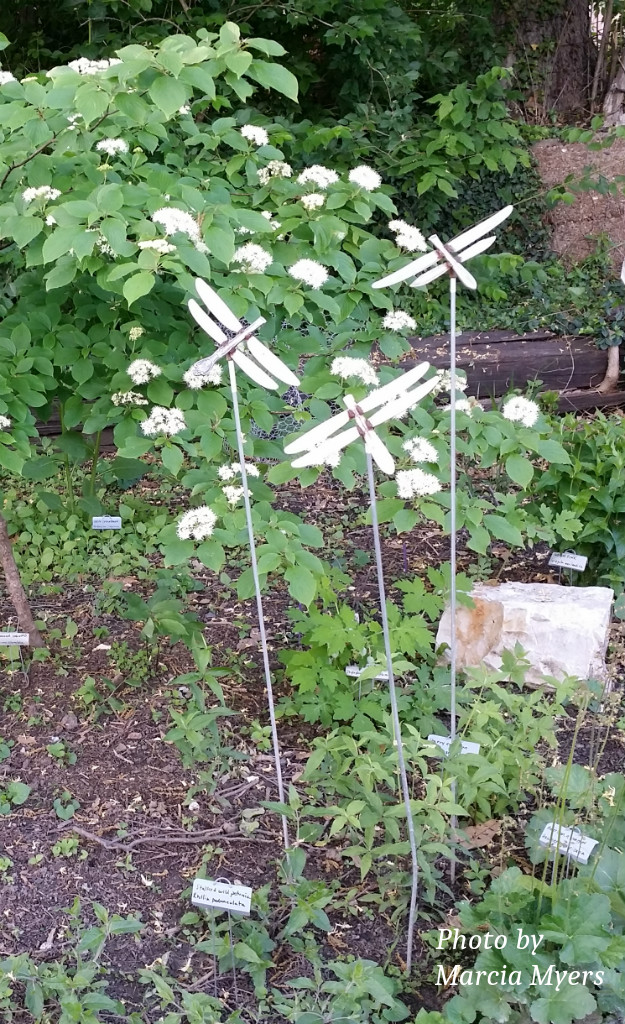
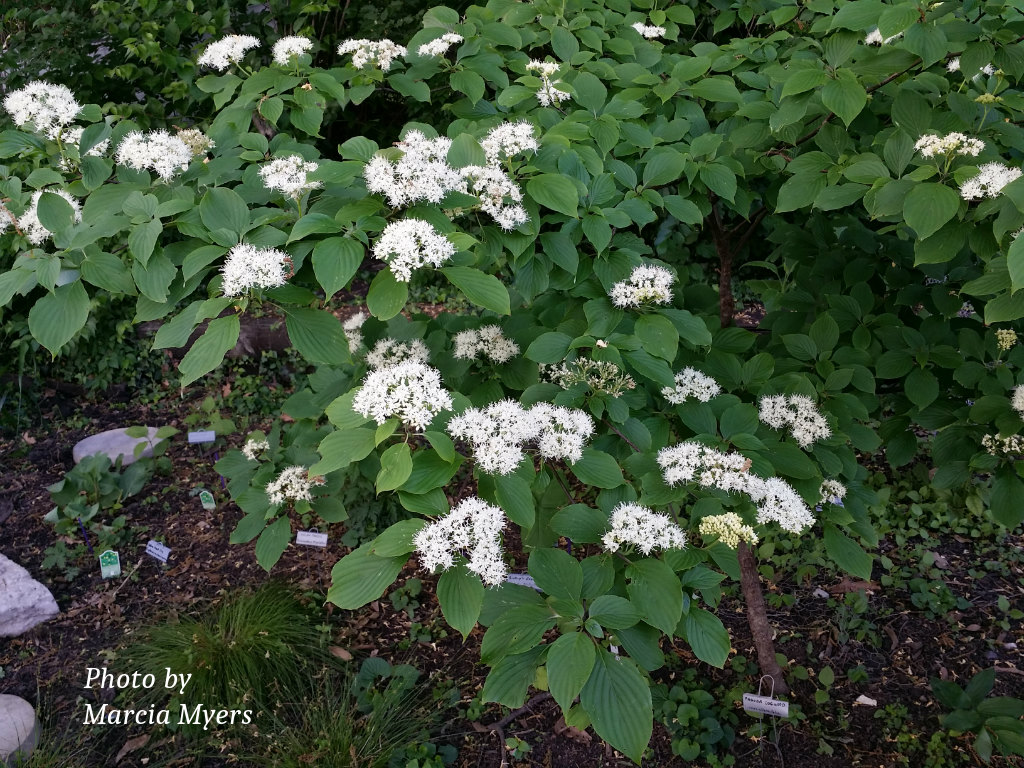
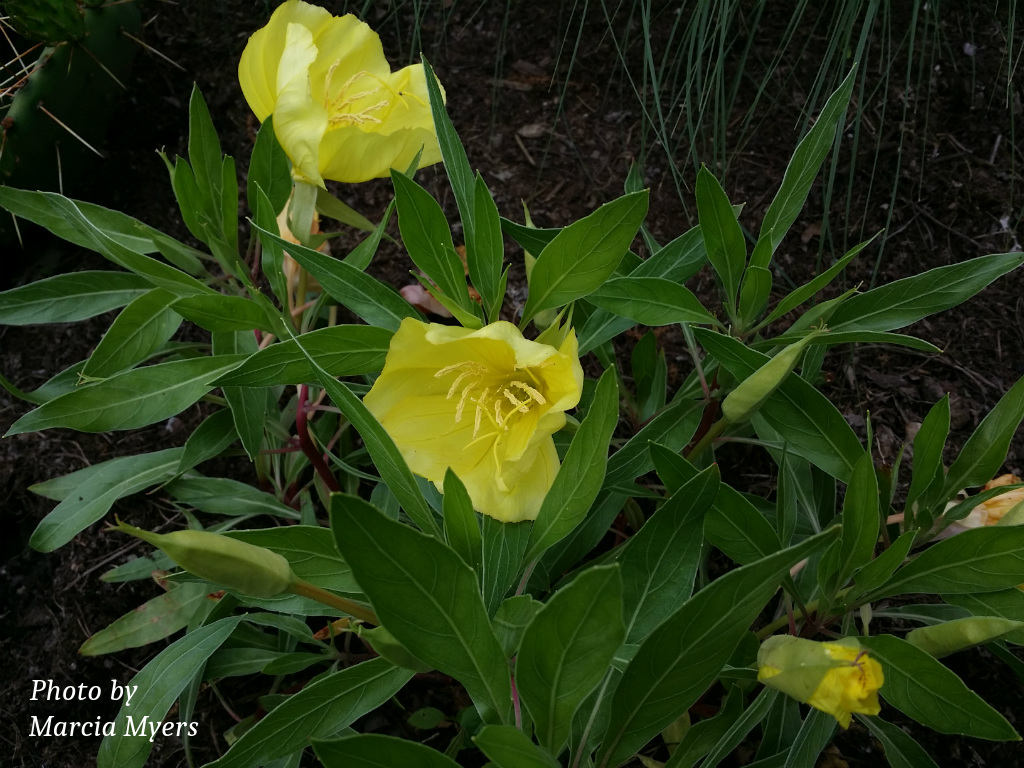

Dawn’s yard is fantastic. She wins the most species of plant contest.
She did a good job on design and I like the yard art work. Every Wild One needs to see her yard.
Marcia, nice article and photos.
Thank you Kathy.
Dawn’s yard looks wonderful! I wasn’t able to visit in person and hope to get a chance some day. I just wanted to clarify that the article mentioned on our Bubbler pond is actually a small pond filled with water. However, we have designed a Pondless Bubbler and did a video demo with Robert Weaver of The Gateway Gardener. Check his website for a link to the video. There are a couple follow-up videos with some improvements to the filter, too.
http://www.gatewaygardener.com
Congratulations, Dawn!
Margy Terpstra
Thanks for the clarification Margy! I’m still not sure which way I’m going to go….
There are advantages to each idea, it primarily depends on space available. Personally, I think the pond is a little easier to maintain, but it’s probably about equal in terms of time. The larger the reservoir of water, the less you have to check it and refill it due to evaporation. In the meantime, check my recent blog post for a couple simple ideas until you decide:
http://hummerhavenunltd.com/blog/2016/5/simple-ways-to-add-moving-water-for-birds
I know that May is a busy time and some were not able to make it to my yard. If you’d still like to visit, just contact me and I’m sure we can set something up. I
Thank you all for your encouragement, complements, and the help that you’ve all given me over the years! It was a pleasure to share the yard, particularly the front yard, with the folks who made it happen.